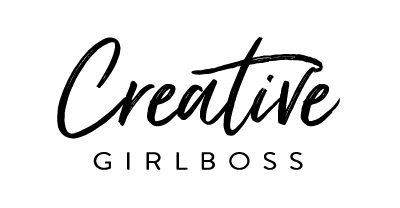As a creative, your bread and butter is the work you produce. When that’s the case, it’s easy to get caught up in doing many things to build your brand and publicize your work. Disconnecting from social media can feel like a luxury you can’t afford.
Yet it can seem like an endless list of channels to keep up with, from your website to blog, mailing list, and multiple social media profiles. Especially with social networks, things are ever-evolving. It can often seem that just as you’ve mastered Instagram stories, IGTV rolls out. What will come next?
If you’re feeling exhausted from keeping up with the social media machine, there is another way.

How did we get here?
Social media and technology originally evolved to connect people. Yet today, it often does the opposite, breeding competition and making people feel isolated. But the problem is not these platforms in itself. The problem is when we allow “best practices” and rules like “post at least one time a day” to dictate how we use them.
In doing so, we forget that platforms are just that – platforms to give people a voice. And it is up to us to decide what we want to put out there. So much content we see on social media feels repetitive and uninspired. And the people creating all this content feel like there’s not enough time to put enough content up across all the different platforms where their audience can be found.
Why? Because too often, this content is force-fit into the standard “rules” of how the medium should be used. So why follow the rules? Why not break them? As artists, we know that creativity comes from going against the flow. And when it comes to being in the public space online, there is no better place to start being unconventional and creative.
Disconnecting to stay inspired
What does this mean in practice? Many creative thinkers believe that it starts with the work you do offline. Want to have something actually worth sharing, instead of contributing to the noise floating around social media? Start offline. Inspiration doesn’t happen when you’re trying to churn out another witty Tweet. Inspiration comes when you step away from the keyboard and the noise.
Warren Ellis, graphic novelist, writer, public speaker and author of the NYT best-selling novel Gun Machine, writes:
“The trick, for me, is carving out time for things and trying to do them with some wit…. I am not ready for the world until I’ve had my 45 minutes with four espressos in the back garden with earbuds in…. I spend a lot of time on my own, and mostly in my office.”
Sophia Breene, a writer at Greatist.com, explains:
“Scheduling regular “rest time” in the form of unplugging makes sense—like a muscle, the brain needs recovery time in order to develop and grow (and in this case, retain new memories). In fact, shutting off completely may be crucial: One University of Michigan study found that participants who walked in the woods after learning something new were more likely to retain it, suggesting that a little quiet time is essential to optimizing brain function.”
And as the much-loved writer and political activist Anne Lammott wisely said:
“Almost everything will work again if you unplug it for a few minutes, including you.”
Going against the norm when you connect
What else can you do to swim against the current and create great work that is worth sharing? You don’t have to shun social media completely. You still need to give your audience a way to discover you. But you can change the way the game is played and do social media differently.
Jaron Lanier is a computer scientist and is one of the most celebrated tech philosophy writers in the world. He wrote in his book You Are Not A Gadget a list of things “you can do to be a person instead of a source of fragments to be exploited by others”:
- Create a website that expresses something about who you are that won’t fit into the template available to you on a social networking site.
- Post a video once in a while that took you one hundred times more time to create than it takes to view.
- Write a blog post that took weeks of reflection before you heard the inner voice that needed to come out.
- If you are twittering, innovate in order to find a way to describe your internal state instead of trivial external events, to avoid the creeping danger of believing that objectively described events define you, as they would define a machine.

Or, you can cherry-pick and select just one or two platforms that work the best for you. Creative thought leader and artist Austin Kleon writes:
“…it is increasingly hard to justify much time spent [on Twitter] and on other social media sites, like Instagram. (I have not deleted my Facebook account, but I rarely sign in there.) That’s why I continue to write [on my website] every day and keep up my weekly newsletter, both of which produce better thinking and better work from me and give me a stronger, deeper connection to my audience.”
In conclusion…
You don’t need to fill your every waking moment with being “out there” on the Internet. Warren Ellis sums up the beauty of disconnecting brilliantly:
“You don’t have to live in public on the internet if you don’t want to. Even if you’re a public figure, or micro-famous like me. I don’t follow anyone on my public Instagram account. No shade on those who follow me there, I’m glad you give me your time – but I need to be in my own space to get my shit done. You want a “hack” for handling the internet? Create private social media accounts, follow who you want and sit back and let your bespoke media channels flow to you. These are tools, not requirements. Don’t let them make you miserable. Tune them until they bring you pleasure.”







No Comments